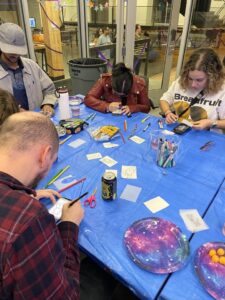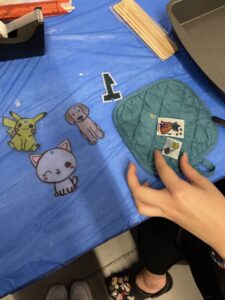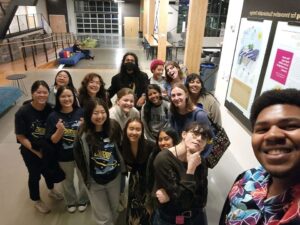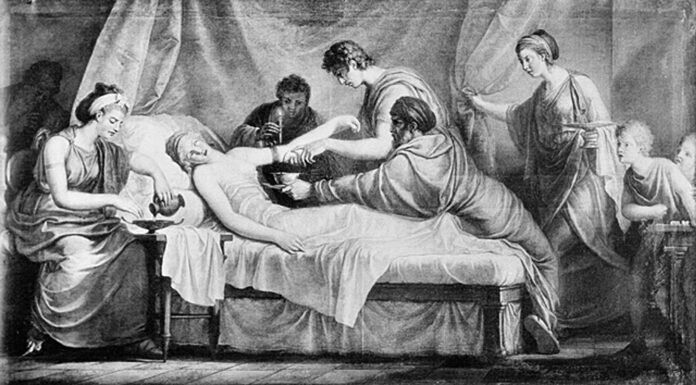I joined STEMComm this semester because I was interested in writing articles centered around science and helping out with coordinating events. This semester I got the opportunity to work on the Atlanta Science Festival event after-party, particularly with the shrinky dink activity. I had a lot of fun throughout the entire process, starting with ideation to the final product. Initially, my group and I were uncertain what we wanted to do that would be scientific and fun. However, during the brainstorming, we decided to host a shrinky dink workshop. This turned out to be engaging and didn’t cost too much money.
A shrinky dink is a toy that was invented in 1973 and was super popular in the 1980s. The process involves drawing one’s design on thin, flexible sheets of polystyrene (a type of thermoplastic), cutting it out, and then heating it thus shrinking it into a thicker, more rigid form (Gelfand). Polystyrene is a common plastic and is considered similar to recycled plastic #6 (Magazine). These sheets are created by extrusion, where the material is melted and die-cut into the final product (Gelfand). By heating the plastic, the long polymer chains in the plastic that are stretched out go back to their original state. As a result, the design “shrinks” to around a third of its size and is marketed as magic.
In our workshop, we cut the plastic sheets into smaller sections for the participants and had a variety of art materials. These included colored pencils, sharpies, markers, hole punchers, and scissors. The product options we decided on were keychains, pins, and magnets. To maintain a safe environment for everyone, we had some team members stationed with heating guns to do the shrinking process. This ensured no participants were harmed in the heating process. Additionally, we had resin that hardened under the UV lamp to create a more secure encasing and fun gloss layer if anyone wanted. The UV light cures the resin through a photochemical reaction. This process does not take too long, depending on how much resin is needed to harden.
Before the event started, we also created several examples to display as well as posters and slideshows to explain the process of shrinky dinks, and resin. Once the event started, the workshop received many curious participants and positive feedback. All the participants were surprised and intrigued by the shrinking process. It was fascinating to see how small the designs became when heated up. While some designs became too small or shrunk a little funky, after a few tries, participants were able to grasp how large they should go with the design before shrinking.
The workshop was a big success and many participants came back to make more than one item. I enjoyed the setup process and seeing the participant’s faces light up in delight during the event. Running the event and seeing the final product of all the planning come together was a rewarding experience. I am looking forward to helping coordinate and run more events in the future!
Sources Cited
Magazine, Smithsonian. “The Science of Shrinky Dinks.” Smithsonian.Com, Smithsonian Institution, 14 Oct. 2010, www.smithsonianmag.com/science-nature/the-science-of-shrinky-dinks-36715644/. Accessed 16 Apr. 2024.
University, Carnegie Mellon. “Shrinky Dinks – Gelfand Center – Carnegie Mellon University.” Shrinky Dinks – Gelfand Center – Carnegie Mellon University, www.cmu.edu/gelfand/lgc-educational-media/polymers/molecular-rearrangement/shrinky-dinks.html#:~:text=Prior%20to%20heating%2C%20the%20thin,while%20retaining%20the%20colored%20design. Accessed 16 Apr. 2024.




